Listening
A1: Start & Stop
Your child raises her hand while the music is playing and lowers her hand when it stops. This introduces her to the practice of noticing and paying attention to a particular sound.
A2: Name That Sound
The child listens to a sound and has to identify the sound. This helps the child learn to focus their attention onto a particular sound.
A3: Find the Noisemaker
Locate an unseen sound somewhere in the room. You are continuing to teach your child to listen attentively, this time by focusing on the location of a sound.
A4: First Sound, Last Sound
The child listens to a sequence of two sounds and names the sounds they hear. This develops the child’s memory and attention skills.
A5: Sound-Source Matching
Match animal sounds with animal pictures, learning and practicing the skill of hearing a specific sound and matching it with its source.
A6: First, Next & Last Sounds
Play three sounds and ask the child to say which came first, next, or last. This will develop the child’s memory and attention skills.
A7: Add the Sound Effects
As you read a storybook, your child will add “sound effects” where appropriate, further developing the skill of paying attention to what she hears and making mental connections between sounds and their sources.
A8: Silly Songs
Identify the “mistakes” in a variety of altered nursery rhymes and songs. Through this the child will learn to pay attention to differences between what she expects to hear and what she actually hears.
A9: Just Following Directions
Listen to and then follow a short sequence of instructions. This will cultivate your child’s ability to remember and then execute actions in the right order, while also continuing to develop his ability to listen attentively.
1. Overview
Children’s ability to listen is critical to learning in school and in life. Attending to sounds in the environment and in language starts at an early age. The first step in building children’s active listening is to use games and activities that purposely emphasize attentive listening.
Although listening is not a phonological awareness skill, it is the foundation for learning all phonological awareness skills. That’s why it is included as the first module of this curriculum.
“The ability to listen closely is a key ingredient of phonemic awareness.”
— Jeannie Partin, Kindergarten teacher
Here are a series of games to build children’s active and attentive listening. They are simple and short, but when repeated regularly and frequently, they will train your child to listen for and recognize different types of sounds.
The games begin with listening to environmental sounds and progress to listening attentively to spoken language.
2. Prerequisites
Some of these listening activities can be done with toddlers as young as two years old, even though they are designed more for three- and four-year-olds.
But if your toddler does not do well with these activities, do not be concerned. Simply wait a few months and try again!
3. Listening Activities
- A1: Start & Stop – Your child raises her hand while the music is playing and lowers her hand when it stops. This introduces her to the practice of noticing and paying attention to a particular sound.
- A2: Name That Sound – Play a variety of sounds for your child to identify. This will help your child to practice focusing attention on identifying particular sounds.
- A3: Find the Noisemaker – Locate an unseen sound somewhere in the room. You are continuing to teach your child to listen attentively, this time by focusing on the location of a sound.
- A4: First Sound, Last Sound – The child listens to a sequence of two sounds and names the sounds they hear. This develops the child’s memory and attention skills.
- A5: Sound-Source Matching – Match animal sounds with animal pictures, learning and practicing the skill of hearing a specific sound and matching it with its source.
- A6: First, Next & Last Sounds – Play three sounds and ask the child to say which came first, next, or last. This will develop the child’s memory and attention skills.
- A7: Add the Sound Effects – As you read a storybook, your child will add “sound effects” where appropriate, further developing the skill of paying attention to what she hears and making mental connections between sounds and their sources.
- A8: Silly Songs – Identify the “mistakes” in a variety of altered nursery rhymes and songs. Through this the child will learn to pay attention to differences between what she expects to hear and what she actually hears.
- A9: Just Following Directions – Listen to and then follow a short sequence of instructions. This will cultivate your child’s ability to remember and then execute actions in the right order, while also continuing to develop his ability to listen attentively.
Leave a Reply


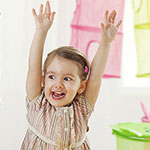


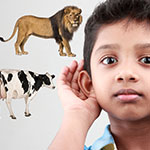
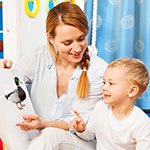
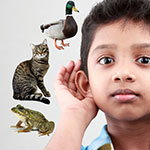
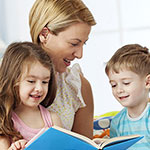


3 Responses to “Listening”
Sandra Statham
Our class enjoyed all of the listening activities. We loved L3. I had a home made drum and walked around our classroom beating different beats. The students had their eyes closed and had to point in the direction they sound was coming from. They all aced this activity. We enjoyed all but they loved this one. Thanks…I teach at First Baptist and couldn’t find the area or the sign in page to leave this information…Thanks I truly enjoyed our training…
ADMIN – Hi Sandra,
Epic. Glad you and the kids had fun with it. Great idea using a real instrument.
Brittany
If my daughter knows most of her letters and sounds, where would I start in the lesson plan? In phonological/phonemic-awareness? Or would I not do any of this?
Thanks!
ADMIN – Hi Brittany,
Try the phonological/phonemic awareness self-assessment to see where she is. Knowing sounds is great! Lets also make sure she can do things like substitute sounds, and blend sounds before moving on. If she does need a little extra work, you can skip the parts she has already mastered.
minky
Hello, my daughter can recognize print letters and capital letters. She knows the sounds of all . Can you please tell me the next stage where to start?